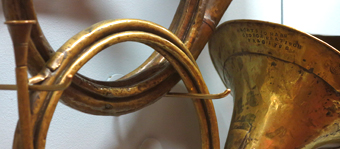Manfred is a dramatic poem written by Lord Byron in 1816-17. It tells the story of the supernatural Manfred who was tortured by guilt, defies redemption, and later commits suicide. Tchaikovsky knew the story and set it to music in 1885. Although it is considered a “programmatic symphony” and was written between his Fourth and Fifth Symphonies, the Manfred Symphony in B minor, op. 58 is the composer’s only symphony that remained unnumbered.
Most of Tchaikovsky’s programmatic works for orchestra were in single movements, such as the Fantasy-Overture Romeo and Juliet or the 1812 Overture. With Manfred, the composer used a story as he did with these single-movement works, but set it in the traditional four movements of a symphony. Tchaikovsky divided Byron’s story into four sections which then became the four movements of the symphony. Here is Tchaikovsky’s program for each of the movements.
- Manfred wanders in the Alps. Weary of the fatal question of existence, tormented by hopeless longings and the memory of past crimes, he suffers cruel spiritual pangs. He has plunged into occult sciences and commands the mighty powers of darkness, but neither they nor anything in this world can give him the forgetfulness to which alone he vainly aspires. The memory of the lost Astarte, once passionately loved, gnaws his heart and there is neither limit nor end to Manfred’s despair.
- The Alpine fairy appears before Manfred in the rainbow from the spray of a waterfall.
- A picture of the bare, simple, free life of the mountain folk.
- The subterranean palace of Arimanes. Infernal orgy. Appearance of Manfred in the middle of the bacchanal. Evocation and appearance of the shade of Astarte. He is pardoned. Death of Manfred.
This program note was first published in the Greensboro Symphony Orchestra’s 2010-2011 program.



















